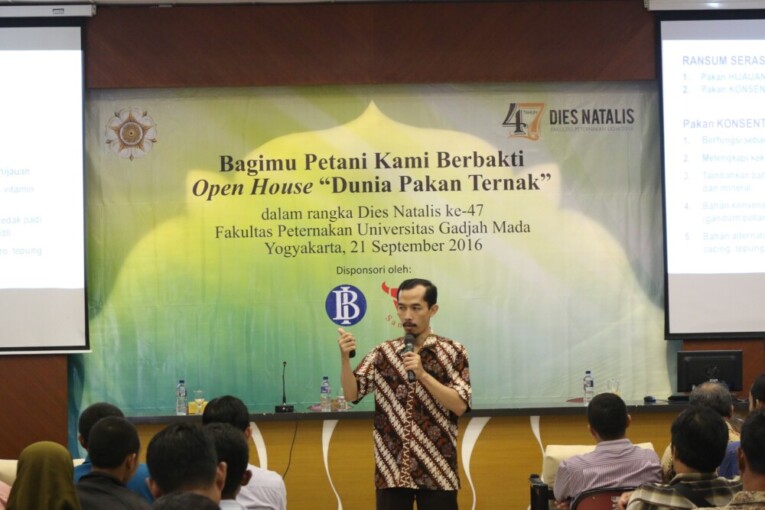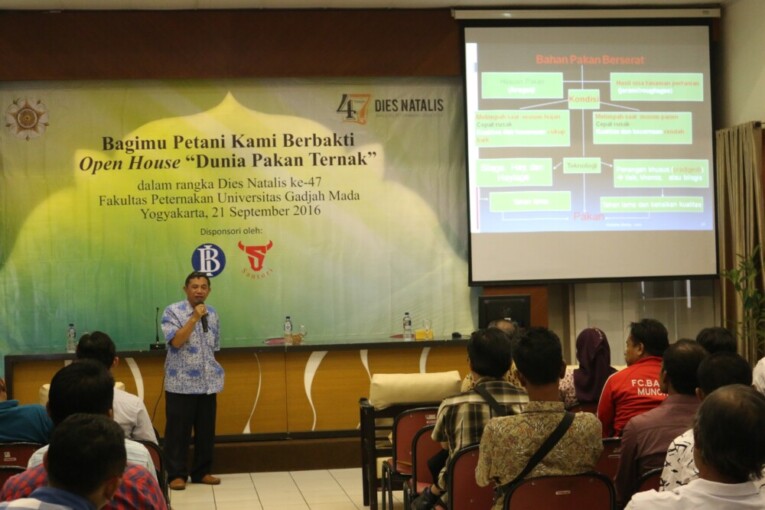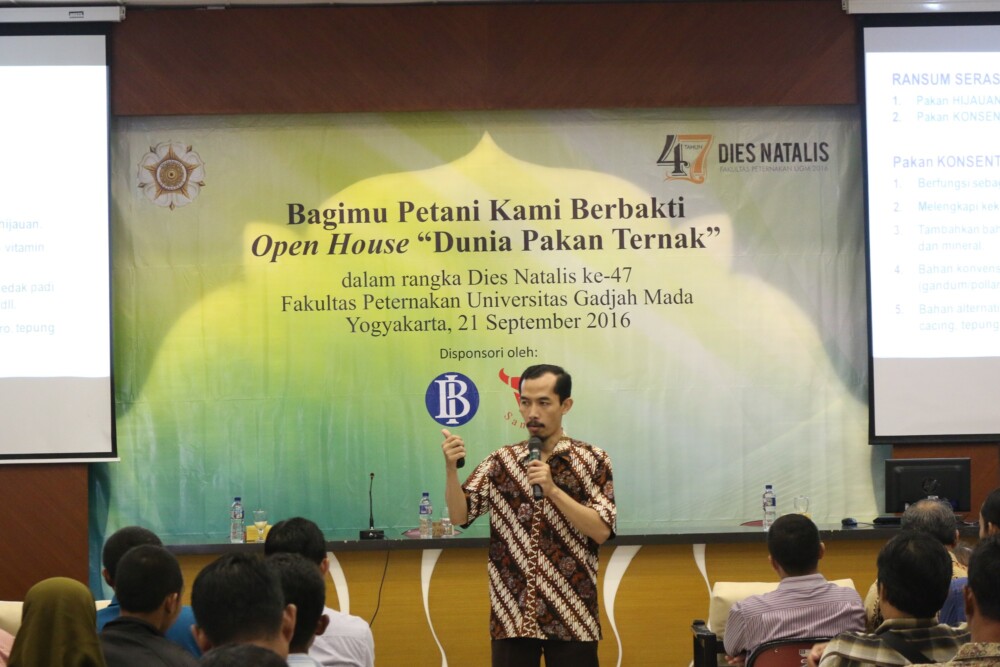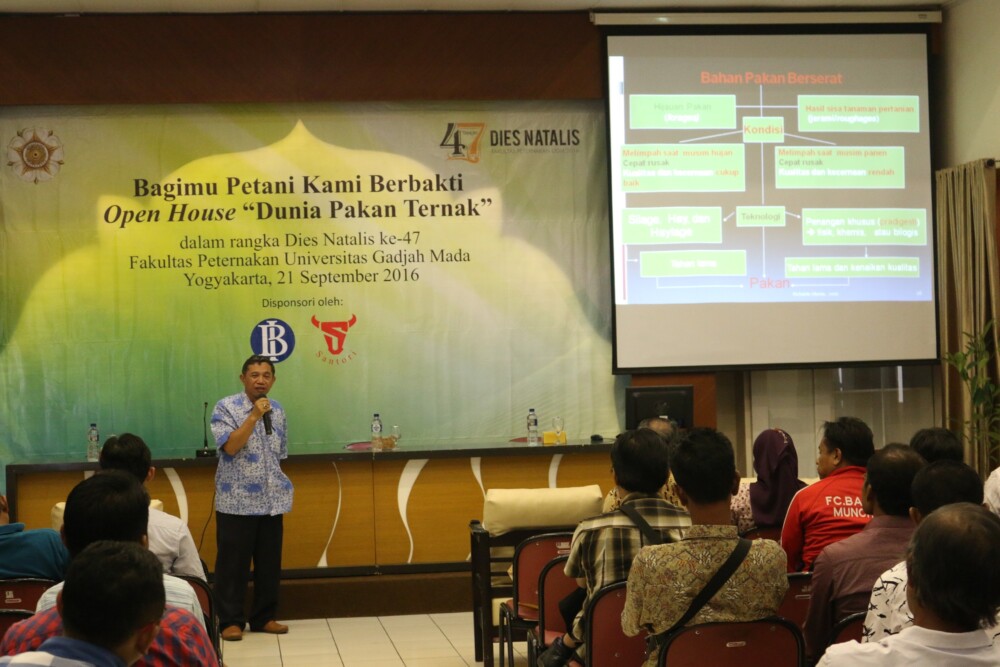Commemorating the 47th Anniversary, Faculty of Animal Sciences UGM organized an activity entitled “Bagimu Petani Kami Berbakti” (To you Farmers We Dedicate Ourselves) at the Auditorium of Drh. R. Soepardjo on Wednesday (21/9). The seminar invited about 200 farmers from various areas in Yogyakarta. Taking the theme “Feed the World”, the event presented panelists who are lecturers in the Department of Animal Nutrition and Fodder, Faculty of Animal Sciences.
In the event, were delivered some materials related to animal feed. The material presented at the event was about probiotics and feed additives, animal feed formulation principles, quality control and processing of feed and the diversity of fodders. Dr. Nanung Danar Dono, talked about the principles of feed rations and feeding techniques. Nanung described how to determine the nutrients elements in the fodder. In addition, he said that the provision of animal feed should be done regularly or at least twice a day.
Nanung also said that the traditional techniques of giving concentrates by use of more liquid is improper. This would lead concentrates to be ingested quickly by cattle but with less of them being absorbed. Nanung recommended the proper way of concentrate delivery techniques by mixing it with the green feed.
“Using the proper techniques of concentrate will increase the absorption of nutrients during digestion and optimize the function of the concentrate as a source of nutrients as well as energy,” explains Nanung.
Furthermore, Prof. Dr. Ir. Ristianto Utomo, SU., delivered tips on feeding. Ristianto said that the feed is one of the important factors that determine the productivity of livestock. The availability of food that is uncertain throughout the year has forced farmers to be careful in feeding. Therefore, one of the efforts to overcome the lack of availability of feed is by the way of preservation. Pickling can be done by drying or fermentation, which can make fodder long-lasting. In addition, the fermentation technique can raise the quality of animal feed.
“The priority is the fresh forage, but if it is limited, preserved forage can be used to meet the needs of animal feed,” said Ristianto.





